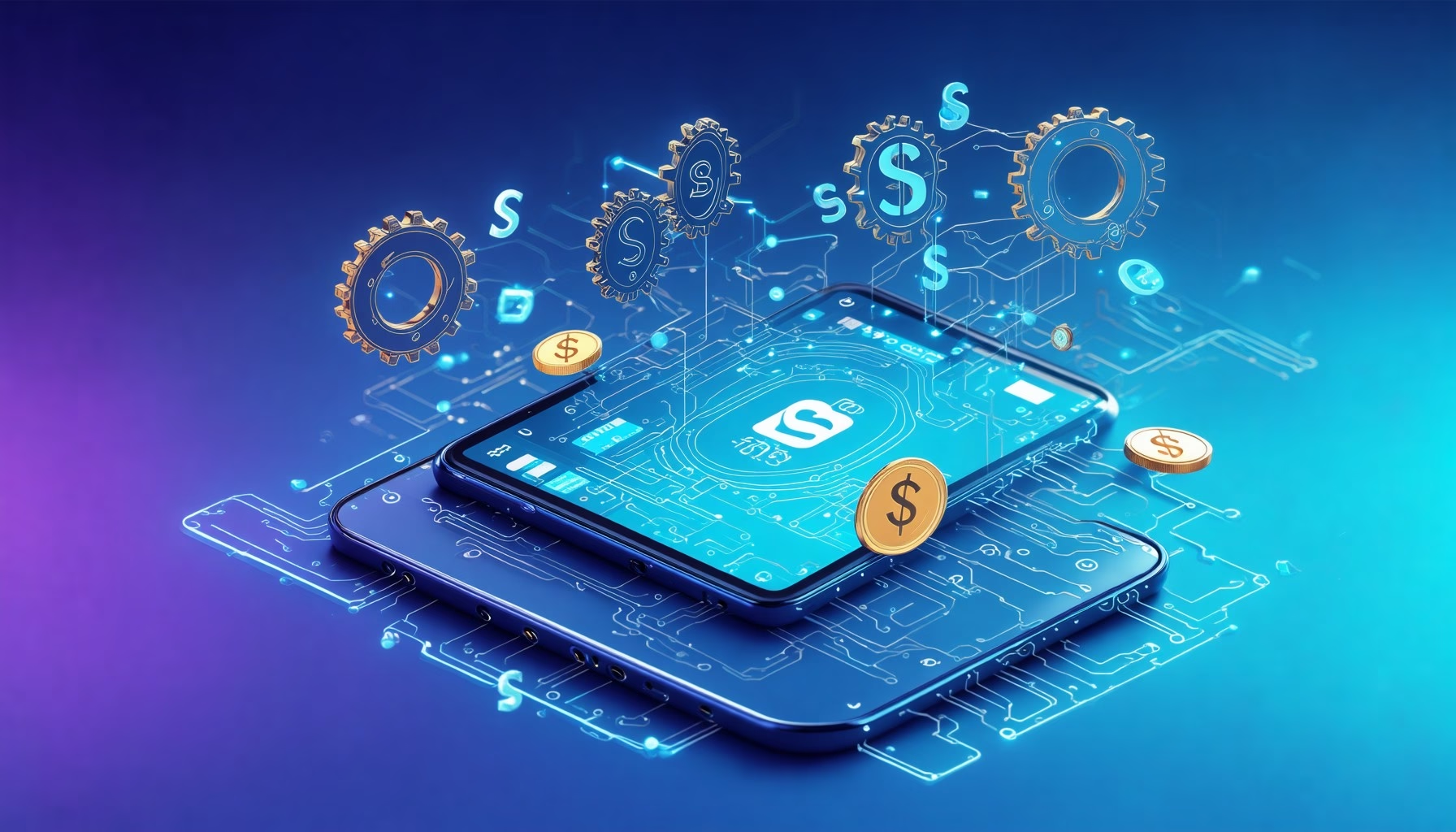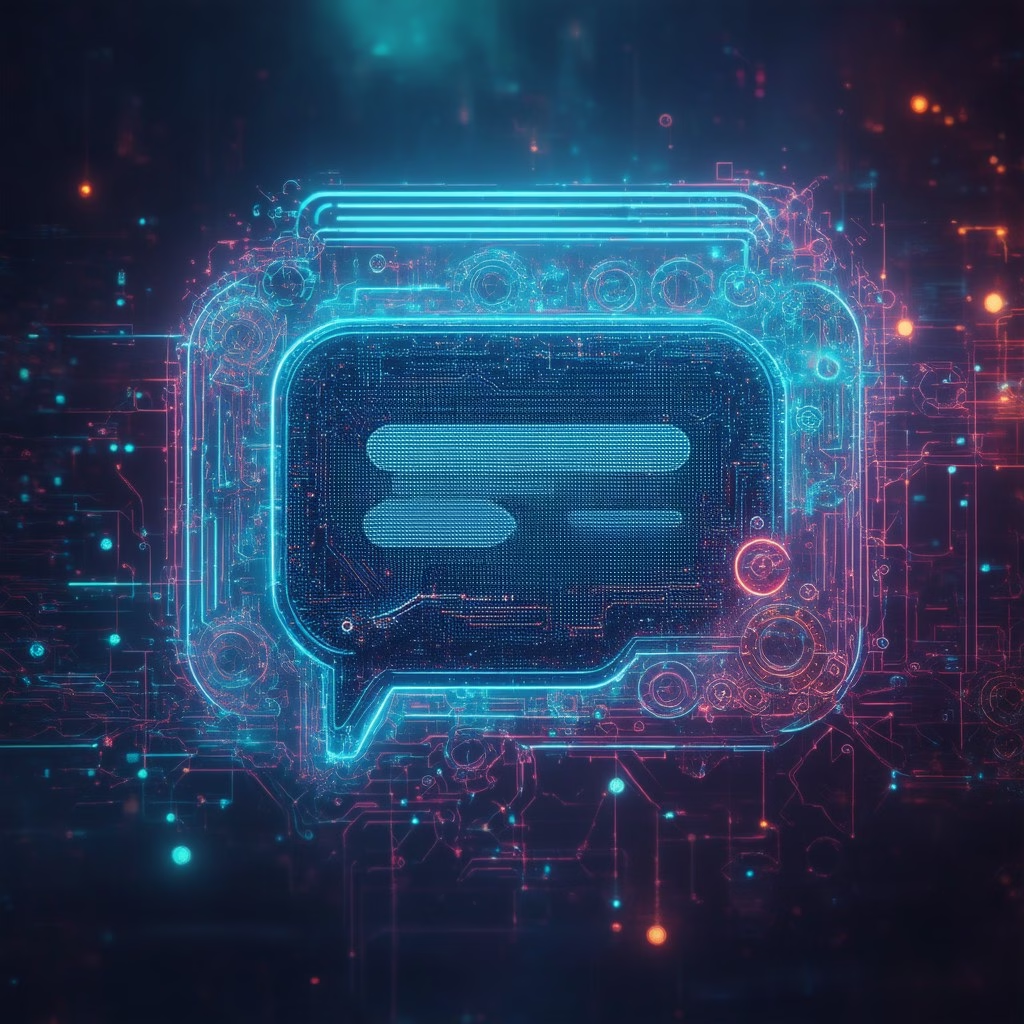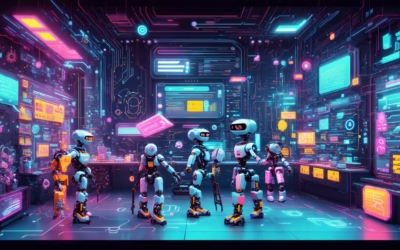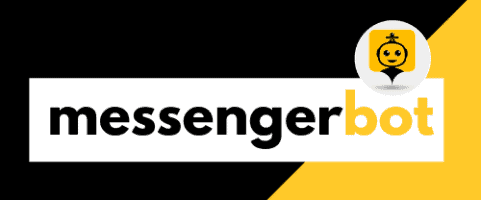Key Takeaways
- Mastering how to make a Facebook Messenger bot enhances customer engagement and streamlines communication for businesses.
- Utilize user-friendly chatbot builders like ManyChat and Chatfuel to create your bot without coding skills.
- Automate responses and workflows to provide real-time support and improve customer satisfaction.
- Explore effective monetization strategies, including affiliate marketing and subscription services, to generate revenue from your Messenger bot.
- Regularly monitor and optimize your bot’s performance using analytics tools to ensure continuous improvement.
In today’s digital landscape, mastering how to make a Facebook Messenger bot is not just a trend—it’s a necessity for businesses looking to enhance customer engagement and streamline communication. This comprehensive guide will walk you through the essential steps of creating, automating, and monetizing your chatbot, ensuring you harness the full potential of this powerful tool. We will begin by exploring the basics of Facebook Messenger bots, including their key features and functionalities. Next, you’ll find a detailed, step-by-step guide on how to create a bot in Facebook Messenger, including free options to get you started without breaking the bank. As we delve deeper, we will uncover effective monetization strategies, revealing how Messenger bots make money and how to make them profitable. Additionally, we will discuss setting up automated responses and the best practices for crafting engaging interactions. Whether you’re a beginner or looking to refine your skills, this article will equip you with the knowledge and tools to successfully create a Facebook Messenger chatbot that drives results for your business.
Understanding the Basics of Facebook Messenger Bots
Creating a Messenger bot can significantly enhance user engagement and streamline communication for businesses. By leveraging the capabilities of Facebook Messenger, you can automate interactions, provide instant responses, and improve customer satisfaction. Let’s dive into what a Facebook Messenger bot is and explore its key features.
What is a Facebook Messenger bot?
A Facebook Messenger bot is an automated software application designed to interact with users on the Messenger platform. It utilizes artificial intelligence to manage conversations, respond to inquiries, and perform specific tasks without the need for continuous human oversight. By integrating a Messenger bot into your communication strategy, you can provide 24/7 support, engage users with personalized messages, and enhance overall user experience.
Building a Messenger chatbot involves several steps:
- Familiarize Yourself with the Messenger Bot Platform: Start by exploring the Facebook Developer Portal. Understand the tools available, including the Messenger API and the Bot Framework, which provide essential functionalities for bot development.
- Set Up Your Facebook Page: Create or select a Facebook Page for your bot. This page will serve as the identity for your bot, allowing users to interact with it seamlessly.
- Use a Chatbot Builder: Utilize a chatbot builder like ManyChat or Chatfuel, which simplifies the process with drag-and-drop interfaces. These platforms allow you to create conversational flows without extensive coding knowledge.
- Design a Welcome Message: Craft a welcoming message that introduces users to your bot’s capabilities. This message should be engaging and informative, setting the tone for the interaction.
- Create Interactive Menu Options: Develop menu options that guide users through the available functionalities. This can include FAQs, product inquiries, or customer support, ensuring users can easily navigate the bot.
- Link Responses to Actions: Implement actions that trigger specific responses based on user input. This can involve integrating APIs to fetch real-time data or providing personalized recommendations.
- Test Your Bot: Conduct thorough testing to ensure all functionalities work as intended. Gather feedback from users to identify areas for improvement.
- Launch and Promote Your Bot: Once satisfied with the bot’s performance, launch it on your Facebook Page. Promote it through social media and other marketing channels to increase user engagement.
- Monitor and Optimize: Regularly analyze user interactions and feedback to optimize the bot’s performance. Use analytics tools to track engagement metrics and make data-driven improvements.
Key Features of Facebook Messenger Bots
Facebook Messenger bots come equipped with a variety of features that enhance their functionality and user engagement:
- Automated Responses: Messenger bots can provide real-time, automated responses to user inquiries, ensuring that customers receive timely information.
- Workflow Automation: These bots enable businesses to create dynamic automated workflows triggered by specific user behaviors, facilitating tailored interactions.
- Lead Generation: Messenger bots leverage advanced messaging techniques to generate leads cost-effectively, utilizing engaging marketing strategies.
- Multilingual Support: They can communicate in various languages, allowing businesses to reach a diverse global audience.
- SMS Capabilities: Messenger bots extend their functionality to mobile devices, offering SMS broadcasting and sequence messaging.
By understanding these core functionalities, you can effectively utilize Facebook Messenger bots to enhance your business communication strategy. For more insights, check out our Messenger Bot tutorials.
How to Create a Messaging Bot?
Creating a messaging bot can seem daunting, but with the right guidance, you can develop a Facebook Messenger bot that enhances user interaction and streamlines communication. Below is a step-by-step guide to help you navigate the process effectively.
Step-by-Step Guide to Creating Your First Messenger Bot
1. Define Goals and Objectives: Begin by clearly identifying the primary purpose of your chatbot. Consider what problems it will solve, the target audience, and the desired outcomes. For instance, will it assist with customer service, provide information, or facilitate transactions? Setting specific goals will guide the development process.
2. Choose a Suitable Platform and Technology: Select a platform that aligns with your goals. Popular options include Facebook Messenger, Slack, and custom websites. Evaluate the technology stack, such as natural language processing (NLP) tools like Dialogflow or Microsoft Bot Framework, to ensure it meets your needs.
3. Design Conversational Flows and User Interface: Create a user-friendly interface that enhances the user experience. Map out conversational flows using tools like flowcharts to visualize interactions. Ensure the bot can handle various user inputs and provide relevant responses, maintaining a natural conversational tone.
4. Train Your Chatbot Using Data Sets: Utilize existing data to train your chatbot effectively. Incorporate machine learning techniques to improve its understanding of user queries. Regularly update the training data with new interactions to enhance accuracy and responsiveness.
5. Test, Evaluate, and Iterate: Conduct thorough testing to identify any issues in functionality or user experience. Gather feedback from real users to evaluate performance. Use analytics tools to track engagement metrics and refine the chatbot based on user interactions. Continuous iteration is key to improving its effectiveness.
6. Implement and Monitor: Once the chatbot is live, monitor its performance closely. Use analytics to assess user satisfaction and engagement levels. Make adjustments as necessary to optimize its functionality and ensure it meets user needs.
For further insights on chatbot development, refer to authoritative sources such as the Chatbots.org for research and development in the field.
How to Create a Chat Bot for Free?
Creating a Messenger bot for free is entirely possible with various tools and platforms available today. Here are some options to consider:
1. Utilize Free Bot Builders: Platforms like Messenger Bot offer free trials that allow you to create and test your bot without any upfront costs. These platforms often provide user-friendly interfaces and templates to simplify the process.
2. Leverage Open Source Solutions: If you have some coding skills, consider using open-source frameworks like GitHub to access free resources and libraries for building your bot. This option gives you more control over customization and functionality.
3. Explore Facebook’s Developer Tools: Facebook provides a comprehensive Messenger Platform Documentation that guides you through the process of creating a bot using their APIs. This resource is invaluable for developers looking to create a Facebook chat bot from scratch.
By following these steps and utilizing available resources, you can successfully create a Facebook Messenger bot for free, enhancing your business’s communication capabilities.
How do Messenger bots make money?
Messenger bots can generate revenue through several effective strategies:
- Affiliate Marketing: By integrating affiliate links within the conversations, Messenger bots can promote products or services. When users make purchases through these links, the bot owner earns a commission. This method leverages the bot’s ability to engage users and recommend relevant products based on their interests.
- Lead Generation: Messenger bots can efficiently capture user information, such as email addresses and phone numbers, which can then be sold to businesses seeking potential customers. This process not only helps businesses expand their reach but also allows bot owners to monetize their audience.
- Subscription Services: Bots can offer premium content or services through a subscription model. Users may pay a monthly fee for exclusive access to personalized advice, curated content, or specialized services, creating a steady revenue stream.
- E-commerce Integration: By connecting with e-commerce platforms, Messenger bots can facilitate direct sales. They can guide users through the purchasing process, answer questions, and provide customer support, enhancing the shopping experience and driving sales.
- Sponsored Messages: Businesses can pay to send sponsored messages through Messenger bots to reach a wider audience. This advertising method allows companies to promote their products or services directly to users who have interacted with the bot previously.
- Chatbot Development Services: If you have expertise in creating Messenger bots, you can offer your services to businesses looking to implement their own bots. This can include custom development, maintenance, and optimization, providing a lucrative income opportunity.
For further insights, refer to sources such as the Journal of Marketing and industry reports from platforms like HubSpot and Statista, which provide data on chatbot effectiveness and marketing strategies.
Exploring Different Revenue Models
Understanding the various revenue models for Messenger bots is crucial for maximizing profitability. Here are some popular approaches:
- Transactional Revenue: This model focuses on generating income through direct sales facilitated by the bot. By integrating payment gateways, businesses can sell products or services directly within the Messenger interface.
- Advertising Revenue: Messenger bots can serve as platforms for advertisements. By partnering with brands, bot owners can earn revenue through sponsored content or promotional messages sent to users.
- Freemium Model: Offering a basic version of the bot for free while charging for premium features or services can attract a larger user base. This model encourages users to upgrade for enhanced functionalities.
By exploring these revenue models, you can effectively strategize how to make Facebook Messenger bots profitable and ensure sustainable growth.
How to make Facebook Messenger bots profitable?
To ensure your Messenger bot is profitable, consider the following strategies:
- Optimize User Engagement: Create engaging content and interactive experiences that keep users returning. The more users interact with your bot, the higher the potential for monetization.
- Utilize Data Analytics: Leverage analytics tools to track user behavior and preferences. This data can inform your marketing strategies and help tailor offerings to meet user needs.
- Implement A/B Testing: Experiment with different messaging strategies and features to determine what resonates best with your audience. Continuous improvement can lead to higher conversion rates.
By focusing on these strategies, you can effectively learn how to make Facebook Messenger bot for business and enhance your overall profitability.
How to Make an Automated Message on Facebook Messenger?
Creating an automated message on Facebook Messenger is essential for enhancing customer interaction and ensuring timely responses. Here’s how to set it up effectively:
- Access Your Page Settings: Log in to your Facebook account and navigate to your business Page. Click on the Settings option located at the top right corner of the Page.
- Navigate to Messaging Settings: In the left-hand column, select Messaging. This section allows you to manage how you communicate with your audience.
- Enable Instant Replies: Under the Response Assistant section, find the option labeled Send Instant Replies to anyone who messages your Page. Toggle the switch to On to activate this feature.
- Customize Your Instant Reply Message: Click on Change next to the instant reply message option. Edit the message to reflect your brand’s voice and provide useful information to your customers. For example, you might include your business hours, a brief introduction, or links to FAQs. After making your changes, click Save to apply the new message.
- Consider Using a Messenger Bot: For more advanced automation, consider integrating a Messenger Bot. This tool can handle multiple inquiries simultaneously, provide personalized responses, and enhance user engagement. Research platforms like Messenger Bot for easy setup options.
- Test Your Automated Message: After setting up, send a test message to your Page to ensure that the automated reply functions as intended.
By following these steps, you can effectively set up an automated message on Facebook Messenger, improving customer interaction and response times. For further reading on Messenger automation, refer to Facebook’s official documentation.
Best Practices for Automated Messaging
To maximize the effectiveness of your automated messaging on Facebook Messenger, consider these best practices:
- Keep Messages Concise: Ensure your automated messages are clear and to the point, providing essential information without overwhelming the user.
- Personalize Responses: Use the recipient’s name and tailor messages based on user interactions to create a more engaging experience.
- Regularly Update Content: Review and refresh your automated messages periodically to keep them relevant and aligned with your business goals.
- Monitor Performance: Utilize analytics tools to track user engagement and response rates, adjusting your strategy based on insights gained.
- Integrate with Other Tools: Consider using additional tools like Brain Pod AI’s chat assistant for enhanced functionality and user experience.
Tools for Creating Automated Messages
Several tools can help you create and manage automated messages on Facebook Messenger:
- Messenger Bot: A user-friendly platform that allows you to build and customize your Messenger bot easily. Check out the Messenger Bot tutorials for guidance.
- ManyChat: A popular choice for creating Messenger bots with a visual interface, making it easy to design automated workflows.
- Chatfuel: Another robust platform that offers templates and customization options for building effective Messenger bots.
- Brain Pod AI: Offers advanced AI capabilities for creating intelligent automated responses that can enhance user engagement.
How to Create a Chat Bot for Free?
Creating a chatbot for free involves several key steps that can help you develop an effective conversational agent. Here’s a comprehensive guide:
- Define the Purpose and Scenario: Start by identifying the primary function of your chatbot. Determine the specific scenarios it will address, such as customer service, FAQs, or lead generation. This clarity will guide your design and development process.
- Gather Frequently Asked Questions (FAQs): Compile a list of the most common questions your users might ask. This can be done through surveys, customer feedback, or analyzing existing support queries. Aim for at least 10-15 key questions to start.
- Craft Clear and Concise Responses: For each question, develop precise answers that are easy to understand. Ensure that the responses are informative and directly address the user’s needs. Consider using a conversational tone to enhance user engagement.
- Choose a Chatbot Development Platform: There are several free platforms available for creating chatbots, such as Chatfuel, ManyChat, and Tidio. These platforms offer user-friendly interfaces and templates that simplify the building process.
- Design the Chatbot Flow: Use the platform’s tools to create a logical flow for the conversation. Incorporate menu buttons and quick replies to guide users through the interaction seamlessly. Visual flowcharts can help in planning the conversation structure.
- Integrate with Messaging Apps: If applicable, connect your chatbot to popular messaging platforms like Facebook Messenger. This integration allows you to reach a broader audience and provides users with a familiar interface.
- Test Your Chatbot: Before launching, conduct thorough testing to ensure that the chatbot responds correctly to various inputs. Gather feedback from users to identify areas for improvement.
- Launch and Monitor Performance: Once satisfied with the chatbot’s functionality, launch it and monitor its performance. Use analytics tools provided by the platform to track user interactions and refine responses based on user behavior.
- Iterate and Improve: Continuously update your chatbot based on user feedback and changing needs. Regularly review the FAQs and responses to keep the content relevant and accurate.
Facebook Messenger Bot Free Options
When looking for free options to create a Facebook Messenger bot, consider utilizing platforms like Messenger Bot, which provides a straightforward interface for building bots without any coding skills. These platforms often come with templates and tutorials that guide you through the process of setting up your bot efficiently.
Additionally, leveraging open-source solutions can be beneficial. For instance, you can explore Brain Pod AI for advanced functionalities that can enhance your bot’s capabilities. This approach allows you to customize your bot while keeping costs low.
How to Make Facebook Messenger Bot for Business?
Creating a Facebook Messenger bot for business is a strategic move that can enhance customer engagement and streamline operations. By leveraging the capabilities of Messenger bots, businesses can automate interactions, provide 24/7 support, and personalize user experiences. Below, we explore two critical aspects of implementing Messenger bots for business growth.
Case Studies of Successful Facebook Messenger Bots
Examining successful case studies can provide valuable insights into how to make a Messenger bot for free and effectively utilize its features. For instance, brands like Sephora and H&M have successfully integrated Messenger bots to enhance customer service and drive sales. Sephora’s bot offers personalized product recommendations and booking services, while H&M’s bot assists users in finding outfits based on their preferences. These examples highlight the potential of Messenger bots to improve customer satisfaction and increase conversion rates.
Facebook Chat Bot Free Solutions for Businesses
There are several free solutions available for businesses looking to create a Facebook chat bot. Platforms like Messenger Bot provide user-friendly interfaces that allow you to build and deploy bots without extensive coding knowledge. Additionally, tools like ManyChat and Chatfuel offer free plans that enable businesses to create basic bots with essential functionalities. Utilizing these free resources can help you understand how to create Facebook Messenger bot in Python or other programming languages, making it easier to customize your bot according to your business needs.
How to make Facebook Messenger bot for business?
Creating a Facebook Messenger bot for business can significantly enhance customer engagement and streamline communication. By leveraging automation, businesses can provide timely responses, gather leads, and improve overall customer satisfaction. Here’s how to effectively implement bots for business growth.
Case Studies of Successful Facebook Messenger Bots
Many businesses have successfully integrated Facebook Messenger bots to boost their operations. For instance, Sephora utilizes a Messenger bot to assist customers with product recommendations and appointment bookings. This not only enhances customer experience but also drives sales through personalized interactions.
Another example is HubSpot, which employs a Messenger bot to provide immediate support and guide users through their services. This approach has resulted in increased user engagement and higher conversion rates. By analyzing these case studies, businesses can glean insights into effective strategies for their own Messenger bot implementations.
Facebook chat bot free solutions for businesses
For businesses looking to create a Messenger bot without incurring high costs, several free solutions are available. Platforms like Messenger Bot offer free trials that allow businesses to explore features without upfront investment. Additionally, utilizing open-source solutions, such as GitHub repositories, can provide customizable options for building a bot tailored to specific business needs.
By adopting these free solutions, businesses can effectively engage with their audience while minimizing expenses. This strategy not only fosters customer loyalty but also positions the business for growth in a competitive market.







